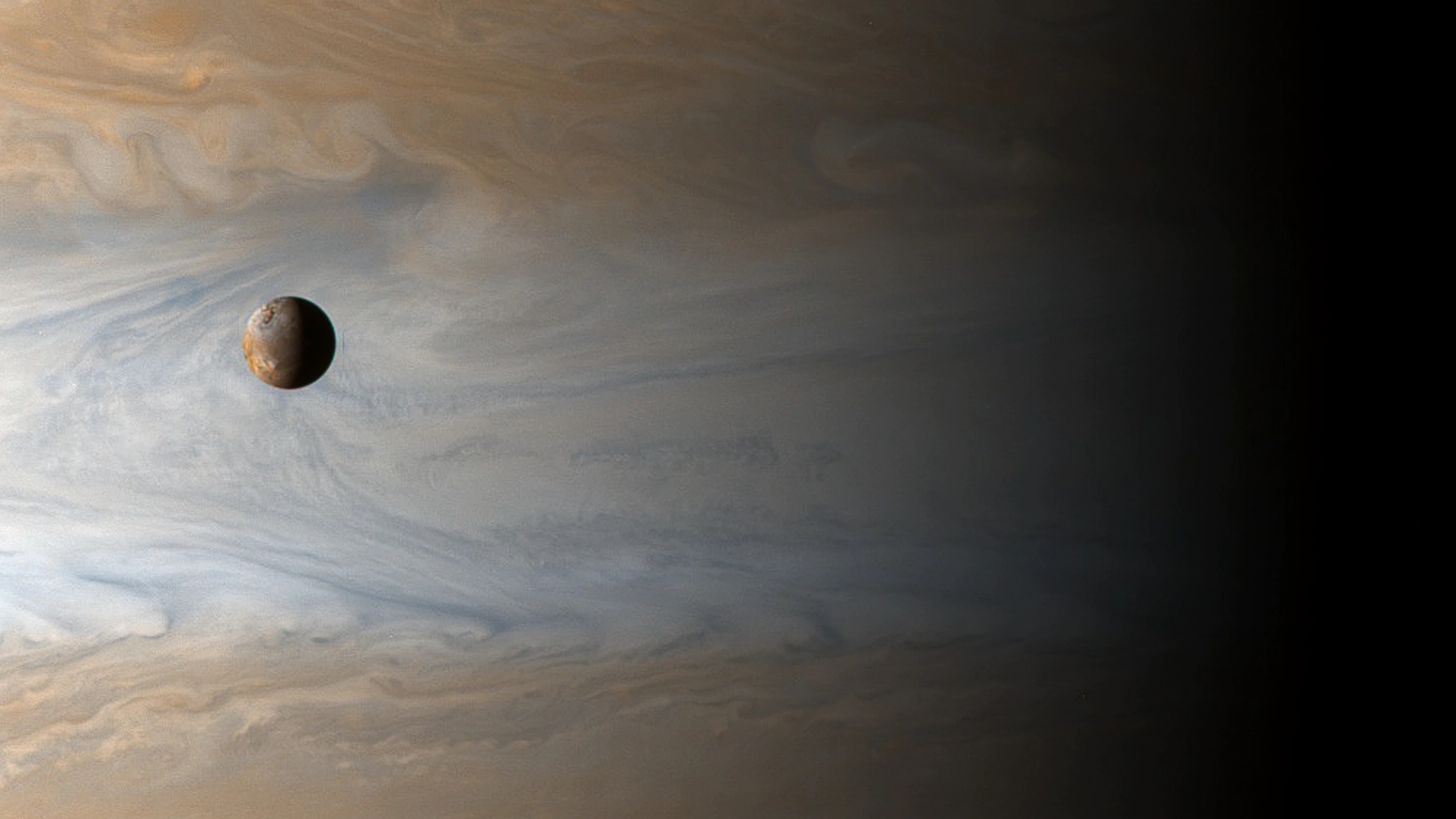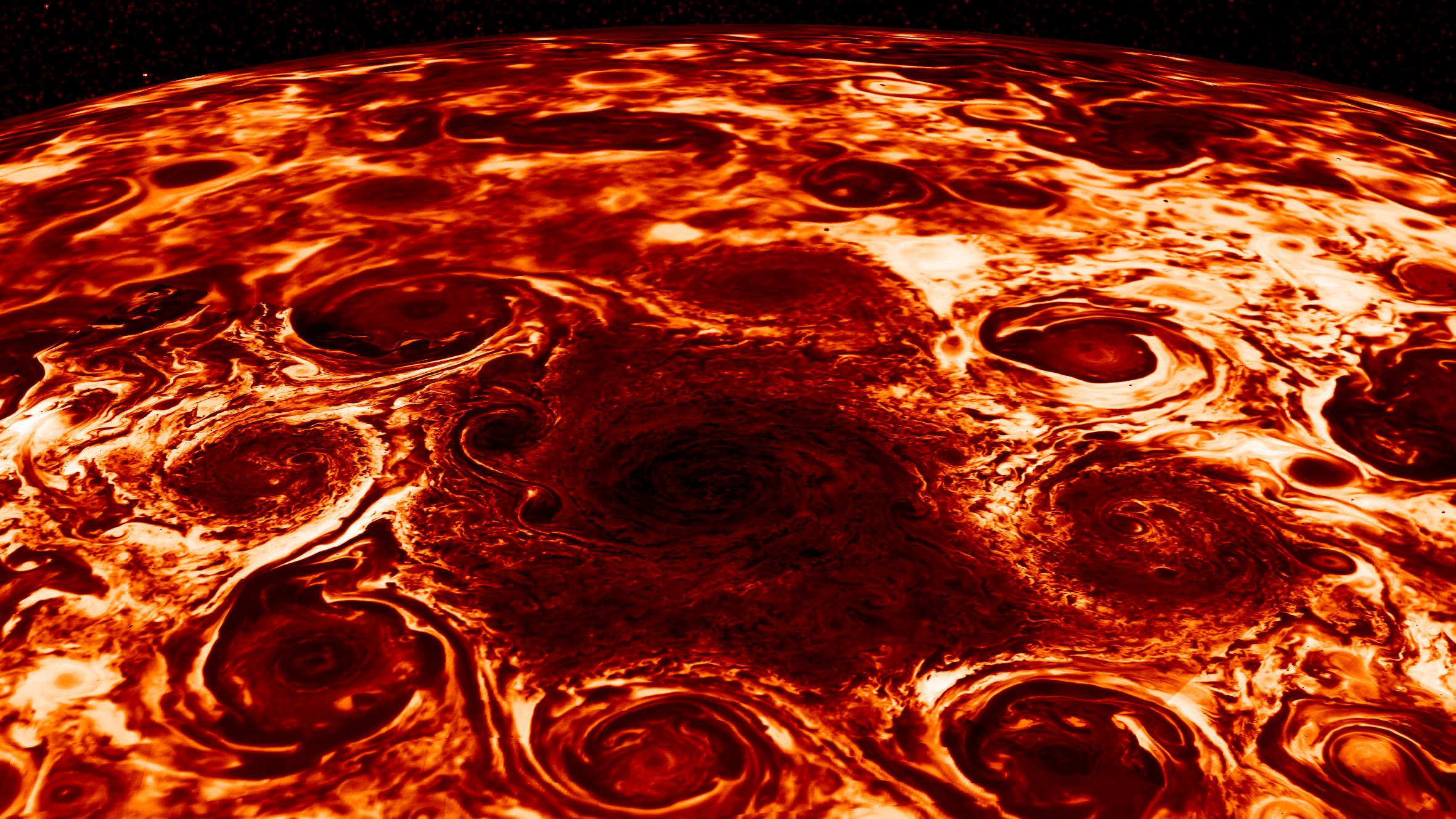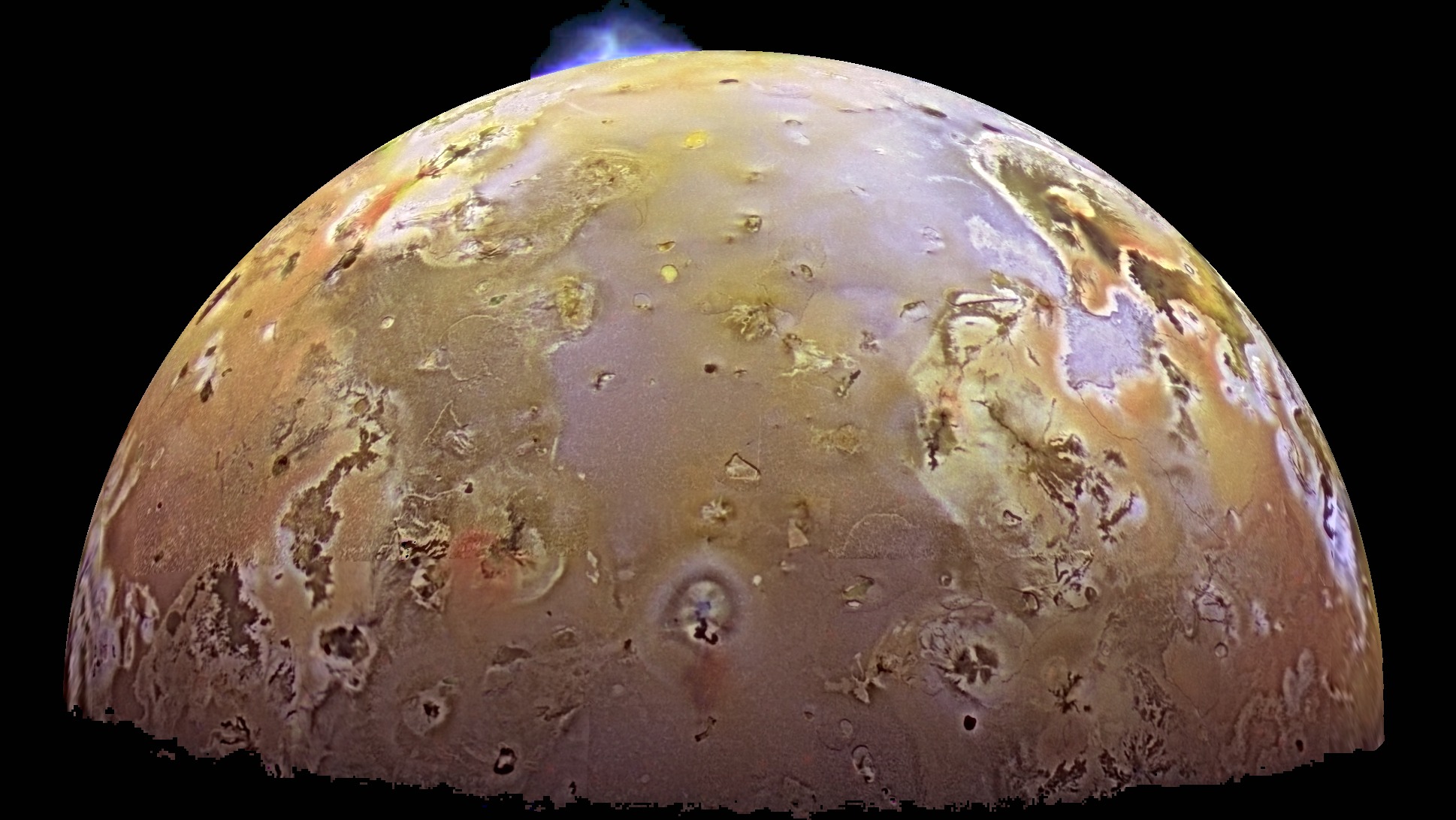Jupiter and its moons will be a 'proving ground' for the James Webb Space Telescope
Concealed oceans, complex rings and covert volcanoes will make this system a challenge for the new observatory.

The James Webb Space Telescope will soon turn its eyes to the solar system's king, the gas giant Jupiter.
Jupiter is a complex system full of mysteries, hosting realms of questions concerning the nature of its delicate rings, how its largest moons may harbor oceans of water or hidden volcanoes, and how massive storms like the Great Red Spot form in the giant planet's turbulent atmosphere. The planet will be the perfect "proving ground," researchers say, for the James Webb Space Telescope, the $10 billion observatory that will showcase its first operational images on July 12 .
"It will be a really challenging experiment," study co-leader Imke de Pater, a planetary scientist at the University of California, said of Webb's forthcoming Jupiter studies in a 2020 consortium statement.
"Jupiter is so bright, and Webb's instruments are so sensitive, that observing both, the bright planet and its fainter rings and moons, will be an excellent test of how to get the most out of Webb," added de Pater, who is leading the study with Thierry Fouchet of the Observatoire de Paris.
Live updates: NASA's James Webb Space Telescope mission
Related: How the James Webb Space Telescope works in pictures
Jupiter is a bright target that will require precise calibrations of Webb's instruments, so as not to wash the planet out in the telescope's sensitive optics. The gas giant also rotates quickly, making it harder to take a time-lapse image to perform science observations.
But once these obstacles are overcome, scientists say they are looking forward to new insights using Webb's unique 18-segment mirror and four infrared instruments.
Get the Space.com Newsletter
Breaking space news, the latest updates on rocket launches, skywatching events and more!
Atmospheric studies of Jupiter will feature prominently. For example, the telescope will study enigmatic cyclone storms in the polar region, also under scrutiny by NASA's Juno spacecraft, to look at their winds, clouds, gas and temperature.
Webb will also look at the atmosphere just above the swirling Great Red Spot, which has unexplained temperature variations (for example, the atmosphere just above is much colder than other zones of Jupiter.)
Further afield, the team hopes to spot new moonlets in Jupiter's rings. This will be especially challenging as the planet's bright light can wash out the faint ring system made up of tiny and sparse dust particles, officials stated. (Strategies to deal with this problem can help future exoplanet observers using Webb to see faint worlds next to bright stars.)

Then there are Jupiter's large moons. This first set of studies will examine icy Ganymede and volcanic Io to gain more insights into how these worlds formed and changed over time.
Ganymede's outer atmosphere will be imaged by Webb to "better understand the moon’s interaction with particles in Jupiter's magnetic field," researchers stated. Webb will also search for a suspected saltwater ocean beneath Ganymede's surface.
The investigations of Io will include a search for "stealth volcanoes," which researchers suspect are erupting without scattering any dust particles that would better reflect light for telescopes to see.
Webb, however, has higher spatial resolution than past missions to Jupiter (including Voyager and Galileo), allowing it to potentially spot stealth volcanoes along with "hotspots." The high temperature concentrations on Io's surface may be similar to what is seen with Earth's volcanism, but more study is required to confirm observations by Galileo in the 1990s and 2000s.
The telescope will also look in detail at Io's temperature structure, which so far is relatively unknown as not much data has been collected about the temperature at different altitudes of the moon's atmosphere, the statement said.

As Webb turns its optics on Jupiter from deep space, observatories orbiting closer to the planet will be providing assistance. For example, Webb's long-range view of Jupiter's atmosphere and its will provide valuable context for the Jupiter-orbiting Juno.
"No one observatory or spacecraft can do it all," study co-investigator Michael Wong of the University of California, Berkeley, said in the same statement. "We are very excited about combining data from multiple observatories to tell us much more than we could learn from only a single source."
Follow Elizabeth Howell on Twitter @howellspace. Follow us on Twitter @Spacedotcom and on Facebook.
Join our Space Forums to keep talking space on the latest missions, night sky and more! And if you have a news tip, correction or comment, let us know at: community@space.com.

Elizabeth Howell (she/her), Ph.D., was a staff writer in the spaceflight channel between 2022 and 2024 specializing in Canadian space news. She was contributing writer for Space.com for 10 years from 2012 to 2024. Elizabeth's reporting includes multiple exclusives with the White House, leading world coverage about a lost-and-found space tomato on the International Space Station, witnessing five human spaceflight launches on two continents, flying parabolic, working inside a spacesuit, and participating in a simulated Mars mission. Her latest book, "Why Am I Taller?" (ECW Press, 2022) is co-written with astronaut Dave Williams.









